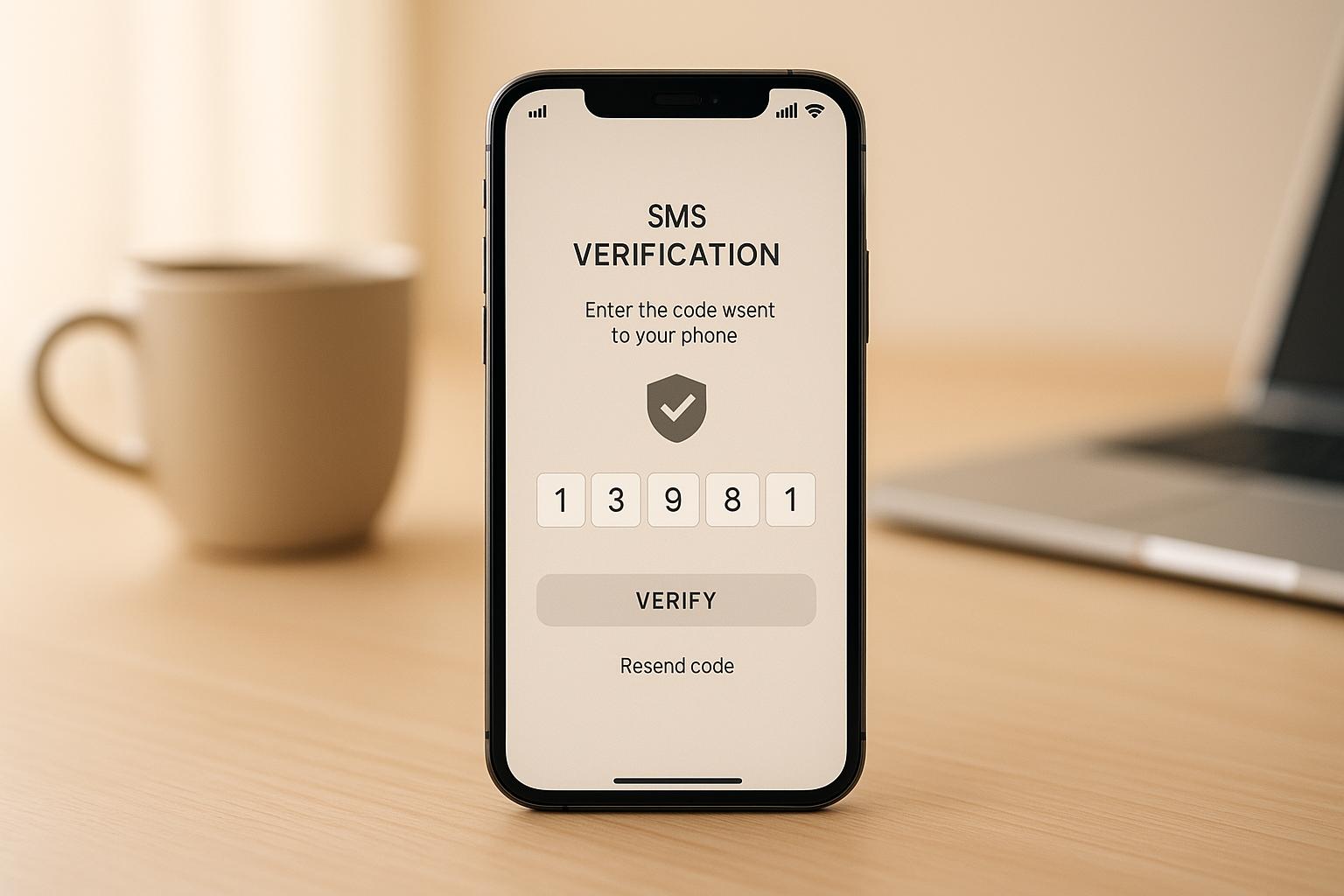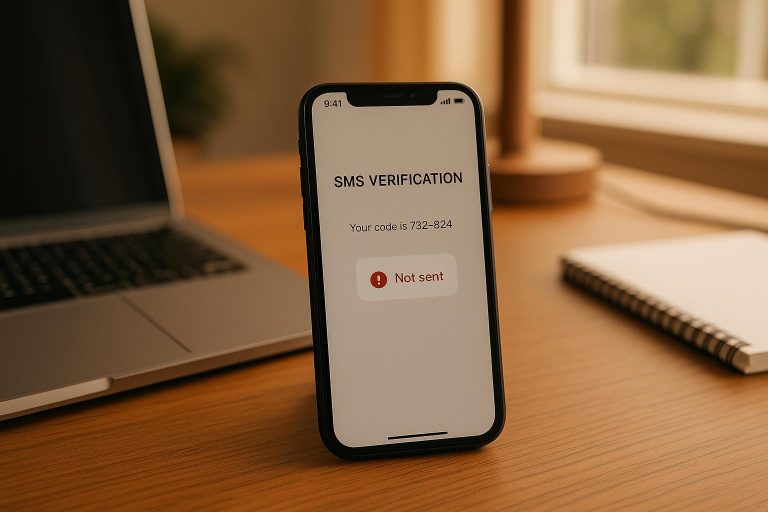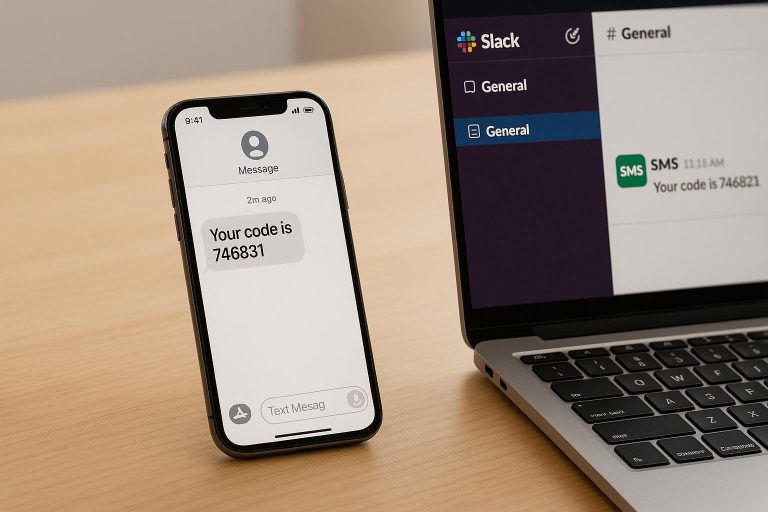SMS Verification FAQ: Common Questions Answered
SMS verification is a simple way to protect your accounts and improve security. It uses a one-time code sent to your phone to confirm your identity. Here’s why it matters:
- Protects against cyber threats: Blocks 100% of bot attacks, 96% of phishing, and 76% of targeted attacks.
- Widely used: 93% of enterprises rely on SMS for verification.
- Improves user experience: 61% of users expect codes within a minute, boosting trust and conversions.
Key Benefits:
- Enhanced Security: Adds a second layer of protection beyond passwords.
- Fraud Prevention: Reduces risks of account breaches and duplicate accounts.
- Universal Compatibility: Works across devices and platforms.
Common Challenges & Fixes:
- VoIP Numbers: Use SIM-based numbers for better traceability.
- Delivery Issues: Check network settings or contact your carrier.
- Privacy Concerns: Use temporary numbers to protect personal data.
SMS verification is easy to set up, effective, and essential for safeguarding online platforms. With digital threats on the rise, it’s a must-have for businesses and users alike.
What is SMS verification and how does it work?
SMS Verification Process
The SMS verification process is a step-by-step method that ensures secure user authentication. A recent study highlights that 93% of enterprises globally depend on SMS one-time passwords (OTPs) for verification purposes [4].
1. OTP Creation and Delivery
When a user initiates a login or performs a sensitive action, the system generates a unique, time-sensitive OTP, typically a six-digit code. This code is then sent via SMS to the user’s registered phone number.
To maintain security, the process includes:
- Random code generation: Each OTP is created using secure and random methods.
- Short validity period: Codes expire quickly to reduce risks.
- Rate limiting: The system restricts the number of attempts to prevent misuse.
Once the code is delivered, the user must input it to complete the verification process.
2. Code Entry and Verification
After receiving the OTP, users must enter it into the app or website. Speed matters here – 61% of users expect these messages to arrive within one minute, according to the 2024 Customer Connections report [1]. The system then compares the entered code with the one it generated.
If the codes match, the user’s identity is verified, and they can proceed.
3. Access Confirmation
SMS verification is highly effective in protecting against various cyber threats. A Google study found that SMS verification codes successfully block:
| Attack Type | Prevention Rate |
|---|---|
| Automated bot attacks | 100% |
| Bulk phishing attacks | 96% |
| Targeted attacks | 76% |
To further enhance security, the system enforces limits on the number of verification attempts, reducing the risk of brute force attacks. This combination of features makes SMS verification a reliable method for safeguarding user accounts.
Security Benefits of SMS Verification
SMS verification plays a vital role in safeguarding digital platforms. With over 76% of organizations worldwide relying on SMS-based two-factor authentication (2FA) [6], its popularity stems from its reliability in protecting user accounts and sensitive data.
Two-Factor Authentication
SMS-based 2FA strengthens security by requiring two steps to log in: a password and a one-time code sent to the user’s mobile device. This extra layer makes it much harder for unauthorized users to gain access. For instance, a review of Coinbase‘s security practices revealed that 95% of their customers use SMS-based authentication to secure their accounts [7].
This approach not only protects logins but also helps reduce fraudulent activities.
Fraud Prevention
SMS verification is a proven method for combating cyber threats. Studies have consistently shown its effectiveness in preventing various types of attacks [3]. For example, EasyPark Group saw a 7% increase in user conversions after implementing SMS verification [1], highlighting how stronger security can also improve user trust and business outcomes.
Cross-Platform Support
One of the standout features of SMS verification is its universal compatibility. It works seamlessly across devices and platforms, making it a go-to solution for many businesses. In fact, 70-80% of organizations globally use SMS authentication [5], and 99% of text messages are read within 15 minutes of being received [8]. A great example is Fitpass, which achieved 100% SMS deliverability using intelligent routing and backup systems [6].
This combination of accessibility and reliability ensures SMS verification remains a trusted security tool.
sbb-itb-070b8f8
SMS Verification Problems and Solutions
While SMS verification offers valuable security benefits, it can sometimes face practical challenges that demand specific solutions.
VoIP Number Blocks
One common issue is the blocking of VoIP numbers. Platforms often block these numbers because they lack strong traceability, making them less secure. Studies highlight that VoIP numbers pose verification challenges due to their lack of ties to physical locations [9].
VoIP numbers are blocked for several reasons:
- They are harder to trace and verify geographically.
- Regulations often prohibit the use of unverified numbers.
- They carry a higher risk of fraud and caller ID misuse.
The solution? Use dedicated SIM-based phone numbers, which provide a more reliable way to verify identity and enhance security.
SMS Delivery Issues
Delayed or missing SMS codes can disrupt access to services, and the impact can be significant. A staggering 83% of businesses have reported losing customers, missing deadlines, or facing terminations because of communication breakdowns [10].
Here are the common delivery problems and how to address them:
- Network Connectivity Issues
Weak signal or network instability can block SMS delivery. Simple fixes like toggling airplane mode or restarting your device often help.
"The solution to my problem was to reset the Mobile Network settings in Settings. Go to Settings > General Management > Reset > Reset Mobile Network settings." [11]
- Technical Barriers
Sometimes, technical glitches can prevent SMS delivery. These include:- Outdated operating systems
- A full inbox
- Incorrect SMS app settings
- Dual SIM configuration issues
- Carrier-Related Problems
In some cases, the issue lies with the mobile carrier. If problems persist, contacting your carrier directly can resolve the matter.
Number Privacy Issues
Another critical concern is safeguarding personal information. Keeping your phone number private is essential to avoid spam, phishing attempts, and unauthorized access. Temporary verification numbers are an effective way to add a layer of protection [12].
"Virtual numbers are a great way to verify accounts and transactions without exposing your personal phone number. They provide an extra layer of security, keeping your private data safe." [13]
To ensure privacy during SMS verification:
- Use temporary or dedicated verification numbers to keep your personal number secure.
- Choose verification services that offer encryption to protect your data.
- Regularly check your SMS activity for any suspicious messages or unauthorized actions.
SMS Verification Setup Guide
Using SIM-Based Numbers
SIM-based numbers provide a dependable option for SMS verification, as they are tied to physical devices, ensuring better traceability. For instance, JoltSMS offers real SIM-based US numbers that boast an impressive 99.9% SMS delivery rate across major platforms.
To improve verification success rates, consider these tips:
- Check SMS Capability: Validate that the numbers can receive SMS messages.
- Use Dedicated Numbers: Assign specific numbers solely for verification purposes.
- Pre-Validate Numbers: Confirm the validity of phone numbers before sending out OTPs (one-time passwords).
- Analyze Geographic Performance: Track conversion rates based on location to optimize delivery.
Once these steps are in place, ensure your system complies with U.S. SMS regulations.
Meeting U.S. SMS Regulations
Adhering to U.S. regulations is a must for any SMS verification system. The Telephone Consumer Protection Act (TCPA) and CTIA guidelines set clear rules to protect consumers and maintain trust in SMS communications.
Here are the key compliance requirements:
- Obtain Consent: Secure express written consent before sending any verification messages.
- Respect Time Zones: Only send messages between 8:00 AM and 9:00 PM in the recipient’s local time.
- Identify Your Business: Include your business name or identification in every message.
- Offer Opt-Out Options: Provide simple and clear instructions for opting out.
- Keep Records: Maintain accurate records of consent for future reference.
"Simply stated, the underlying purpose of both the U.S. regulatory and telecommunication industry rules that govern businesses’ and organizations’ use of SMS to communicate with users is to ensure that people do not receive SMS communications that they do not want to receive." – Twilio [14]
Once compliance is ensured, you can move forward with integrating your SMS verification system using an API.
API Implementation Steps
Integrating SMS verification via an API adds another layer of security and efficiency to your system. Follow these steps for a smooth setup:
- Initial Setup
Start by creating an account, obtaining your API credentials, and configuring your environment for integration. - Code Generation and Storage
Generate unique 6-digit verification codes and securely store the following details:- The recipient’s phone number
- Timestamp of the request
- A 5-minute expiration window for the code
- Limits on the number of attempts allowed
- Security Measures
Strengthen your system by implementing these safeguards:- Limit the rate of requests and restrict the number of attempts.
- Encrypt all data transmissions to protect sensitive information.
- Set up access controls to secure your API endpoints.
- Maintain detailed audit trails to track activity.
For Android users, the SMS Retriever API can simplify the process by automating code entry.
Best Practices for API Integration:
- Use retry logic with buffer times to handle failed attempts smoothly.
- Monitor delivery rates and response times to identify potential issues.
- Implement error-handling mechanisms to address failures effectively.
- Use single-domain links for added security.
- Keep comprehensive logs to track performance and troubleshoot problems.
Conclusion: SMS Verification Today
With digital threats continuing to evolve and e-commerce fraud losses expected to reach $343 billion by 2027 [2], the need for robust SMS verification systems has never been more pressing. According to Microsoft, two-factor authentication can prevent 99.22% of automated attacks [16], emphasizing the pivotal role SMS verification plays in safeguarding online platforms.
SMS verification boasts an impressive 98% open rate and is effective at blocking 96% of bulk phishing attacks and 76% of targeted attacks [15][18]. Its accessibility and reliability make it a practical solution for businesses looking to enhance their security measures, proving its widespread appeal and effectiveness.
To maximize the benefits of SMS verification, businesses should adopt these key practices:
- Use real-time risk assessment and SIM swap detection tools.
- Conduct regular security audits to identify vulnerabilities.
- Ensure secure transmission protocols for verification codes.
- Set rate limits to prevent misuse and abuse.
Looking ahead, future systems are set to incorporate advanced fraud detection and biometric authentication [17]. This aligns with the expectations of 61% of consumers who want verification codes delivered within one minute [1]. These advancements not only bolster security but also provide a smoother user experience, creating a robust defense against the ever-changing landscape of digital threats.
FAQs
How does SMS verification make your accounts more secure against cyber threats?
SMS verification boosts account security by introducing an extra layer of protection through two-factor authentication (2FA). This method requires users to confirm their identity using a one-time password (OTP) sent via SMS, on top of their regular username and password. Even if someone manages to steal the password, they still can’t access the account without physical access to the user’s phone.
Since most people carry their phones everywhere, SMS verification cuts down risks associated with weak or reused passwords. It also makes phishing attempts and bot attacks far less effective. This straightforward yet powerful method adds a strong barrier against unauthorized access to sensitive accounts.
What should I do if I’m not receiving SMS verification codes?
If you’re struggling to receive SMS verification codes, here are a few steps you can take to fix the issue:
- Restart your phone: A quick reboot can often resolve minor glitches or network hiccups.
- Verify your phone number: Double-check that you entered the correct number and request a new code if needed.
- Use Airplane Mode: Turn Airplane Mode on and off to refresh your network connection.
- Check your signal: Weak reception can cause delays. Move to an area with stronger signal if possible.
- Allow messages from unknown numbers: Make sure your phone settings permit messages from unfamiliar senders, as verification codes often come from such numbers.
- Clear old messages: Free up space in your inbox by deleting unnecessary texts, ensuring new messages can be received.
If none of these steps work, it’s a good idea to contact your mobile carrier to confirm that SMS messages aren’t being blocked. These tips should help you get your verification codes without further hassle.
How can I protect my phone number when using SMS verification?
To keep your phone number safe during SMS verification, try using temporary or disposable phone numbers. These let you receive verification codes without revealing your personal number, which can help minimize spam and protect against identity theft.
It’s also smart to share your phone number only with trusted platforms. Avoid giving it out unless it’s absolutely required. Being selective about where your number is used can go a long way in safeguarding your privacy and keeping the verification process more secure.







